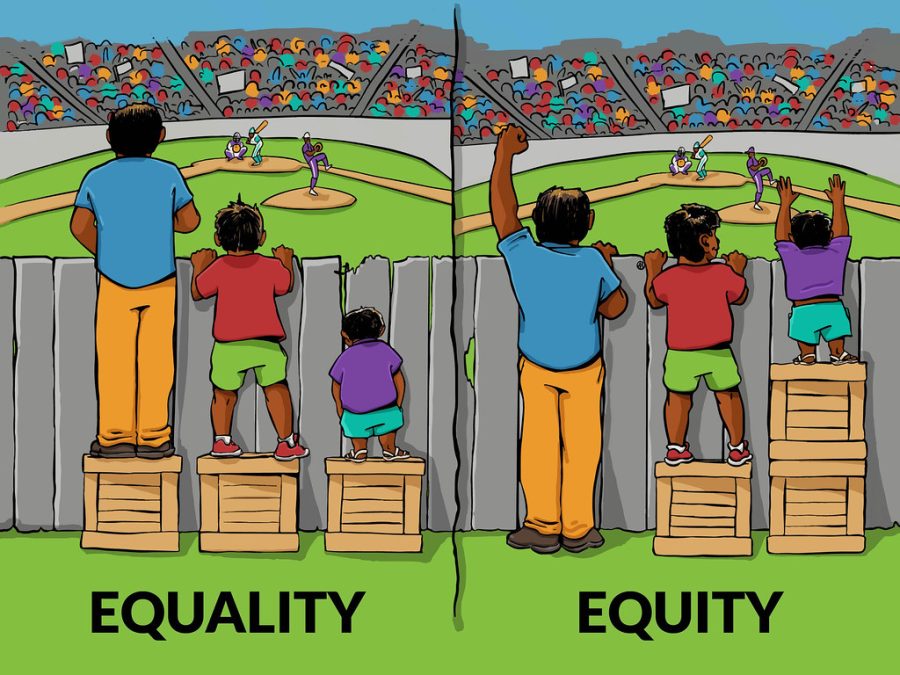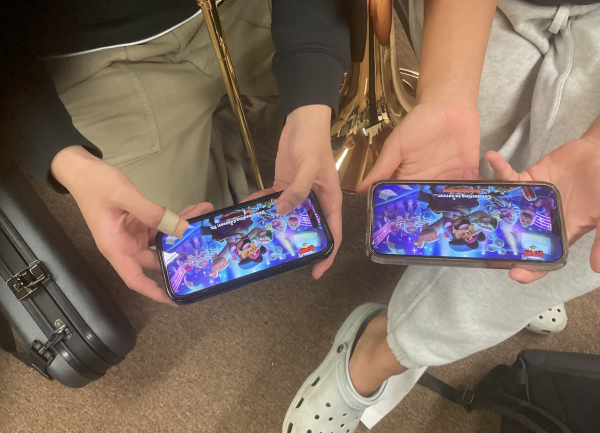Complicated but important: fairness in the classroom
Angus Maguire/Interaction Institute for Social Change on flickr
Image shows difference between being equal and being fair. On the left, the picture defines what being quail is; on the right, it defines what being fair means.
By Archer Liang
Staff Writer
At Mid-Pacific, a diverse community, having equality should not be the final destination of promoting a strong environment. Teachers should see the importance of fairness in their classroom.
The UN takes actions to erect a world with more equality. The U.S. formed a constitution to ensure equality for the people in America; the Equality Caucus ensures equality for everyone in Hawaii.
What’s after equality?
You might have seen these two images that explain the difference between equality and fairness. The picture that defines equality depicts three people watching a game over a fence; each of the three people have different heights, and they all get a box for support. The tallest guy could see the game even without any support, the second tallest person could watch the game with support, and the third person did not see any of the game even with the support. The picture that defines fairness though, depicts the same scene with no support for the tallest guy, little support for the second tallest guy, and most support for the shortest guy.
Equality was an assumption that everyone benefits with the same support; they were treated equally but did not necessarily solve their problems. Fairness, or equity, accounts for different needs in different people.
Sophomore Maile Hirschmann said fairness is important in all environments, especially in education, where equitable environments with fairness should be. It creates opportunities that help students succeed.
“Their[the school’s] goal is not to fail students,” Hirschmann said. “[Such an environment] makes students feel they are catered to by the school, making them want to learn.”
Michael Valentine, science teacher and judo coach, said the challenge of the school was to engage students to want to work.
“Nobody likes to work,” Valentine responds to the challenges of the school.
Creating a fair environment helps students to want to learn and ease this challenge.
When I first came to Mid-Pacific as an English language learner, the fairness in the environment improved the quality of my education. I was asked to write a two-page essay about global problems. Easy, isn’t it? Think about having to write an essay in a new language with perfect grammar, interesting points and natural flow in the second year of that language; is it still easy?
The fairness in the environment allowed me to receive extra help from my English teacher. I approached the work with more resources than some of the other students whose first language was English, yet the school evaluated me the same way as everybody else.
These “accommodations” are examples where fairness takes place in the classroom. Although it alters the regular fashion of how a class would run for everyone else, it puts students to the same level accounting their strengths or weaknesses in different areas.
Test accommodations are adjustment of a test or testing conditions for students with physical or learning disabilities. The same concept applies to most Mid-Pacific classrooms as the population in the school is very diverse. Small weaknesses should receive proper attention to achieve fairness in the classroom.
To address fairness in the classroom and accommodate students so that they will want to learn, Valentine said listening to his students taught him some of his biggest lessons. One of the lessons he learned was that, “I am not here to be your friend; I want to be more than your friends,” he said.
It is important for teachers to provide help to students. Some students said they have trouble getting test accommodations in private school, and sometimes, they spend more time requesting test accommodations than studying for the test.
“They[some teachers] just don’t listen,” Hirschmann shared her concern with requesting test accommodations.
It’s hard to say fairness is fair, because everybody’s perspective is different. But if you keep everybody the same, everything is fair.
“Keeping everything the same is the ultimate way to keep fairness accurate. Everybody starts at different places,” said Valentine. “So the question should be how to raise them up to become fair.”






